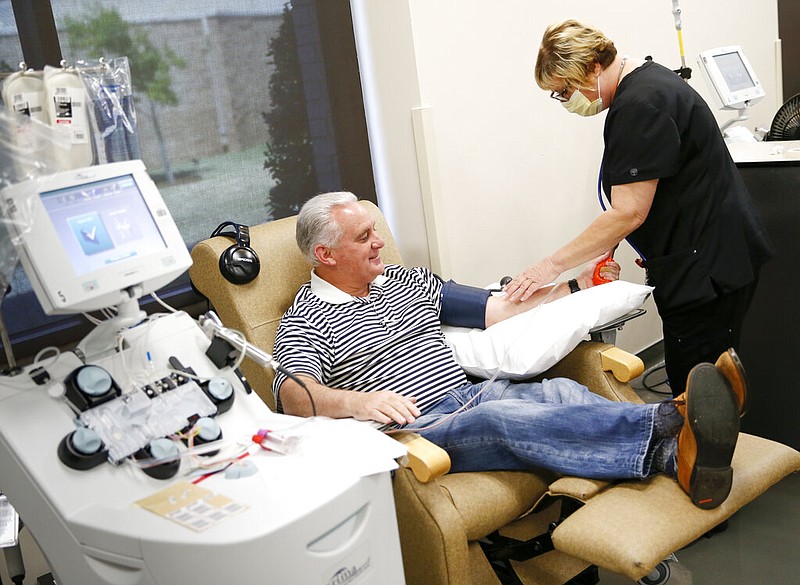TEXARKANA, Ark. - A local plasma donation clinic could soon be part of a nationwide effort to discover COVID-19 therapies in recovered patients' blood.
BPL Plasma is in the process of developing a program to accept blood plasma donations from those who have lived through the disease caused by the new coronavirus, a spokesperson said Wednesday.
Antibodies in those patients' plasma could be used to develop new treatments for COVID-19, which as of Wednesday had killed more than 44,000 Americans, according to the Centers for Disease Control and Prevention.
Produced by plasma cells as part of the body's immune system, antibodies are proteins that attack pathogens such as viruses and bacteria in the blood stream. Recovered COVID-19 patients' plasma - the liquid portion of blood - is rich in the antibodies that fight the new coronavirus.
Injecting such "convalescent plasma" into COVID-19 patients has shown some promise as a treatment, but clinicians warn that the research is in its beginning stages.
"Initial data available from studies using COVID-19 convalescent plasma for the treatment of individuals with severe or life-threatening disease indicate that a single dose of 200 mL showed benefit for some patients, leading to improvement," according to uscovidplasma.org, an information website created by Mayo Clinic.
The site is quick to add a caveat.
"COVID-19 convalescent plasma has not yet been demonstrated to provide clinical benefit in patients affected by this disease. It's not known if this treatment will or will not help those with COVID-19 or if it will have any harmful effects, but this is one of the only treatments that we have at present," the website states.
The Food and Drug Administration issued a similar statement.
"Further investigation is still necessary to determine if convalescent plasma is safe and effective as a treatment for COVID-19, and whether it might shorten the duration of illness, reduce morbidity, or prevent death associated with COVID-19," the FDA website states.
The FDA has established an emergency protocol for treating COVID-19 patients with convalescent plasma, and Mayo Clinic serves as the program's lead institution. American Red Cross will help collect the plasma and distribute it to patients across the country.
Plasma is collected through a process called plasmapheresis, which separates blood cells from plasma and returns them to the donor's body.
"Plasma is commonly given to trauma, burn and shock patients, as well as people with severe liver disease or multiple clotting factor deficiencies. It helps boost the patient's blood volume, which can prevent shock, and helps with blood clotting. Pharmaceutical companies use plasma to make treatments for conditions such as immune deficiencies and bleeding disorders," according to the Red Cross.

